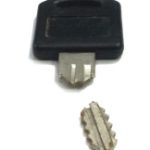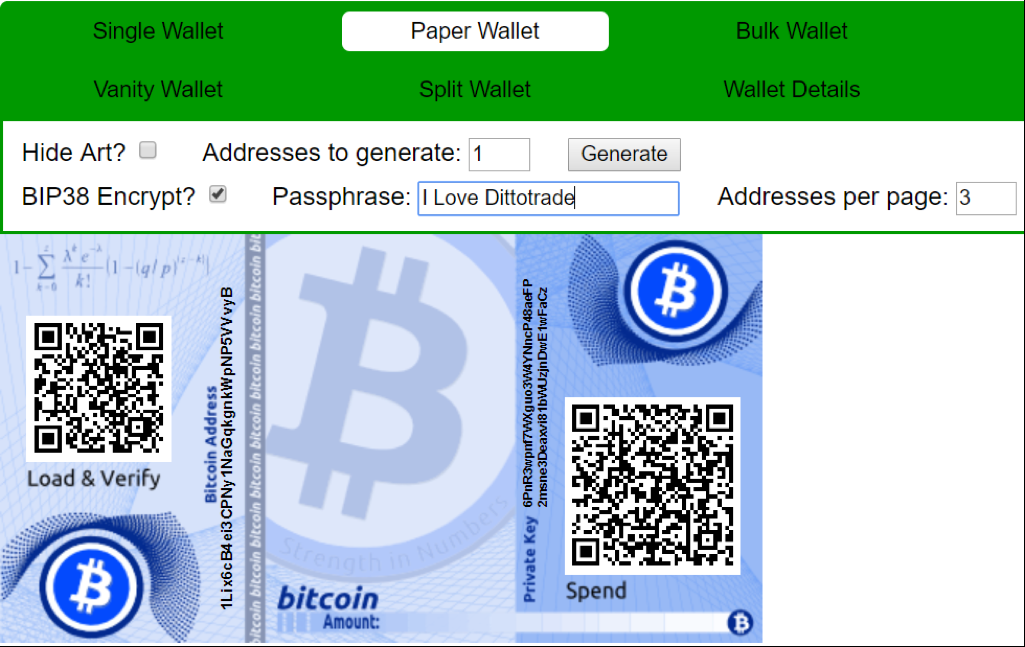**Continuation of our previous article**
 The golden rule followed by most of the cryptonisers out there is using two different storage means, depending on the volume of Bitcoins you want to store. One is by storing small amounts of Bitcoins with a lot of conveniences but less security, and the second is to store a large amount of Bitcoins with less convenience but heavily secured.
The golden rule followed by most of the cryptonisers out there is using two different storage means, depending on the volume of Bitcoins you want to store. One is by storing small amounts of Bitcoins with a lot of conveniences but less security, and the second is to store a large amount of Bitcoins with less convenience but heavily secured.
Storing Large Amounts Of Bitcoins
As discussed earlier, hot storage is suitable for storing small amounts of Bitcoins. They are convenient but are not so secured. For storing a large number of Bitcoins, safety and security are more important than convenience. Hence cold storage (the device where your private keys are stored is not connected to the internet) is the best storage method to store huge volumes of Bitcoins. There are four popular cold storage methods, using which you can store your Bitcoins with extreme safety.
- Paper wallets & Encrypted paper wallets
- Offline transaction signing
- Fragmented private keys
- Multi-signature addresses
Using any of these techniques to store large amounts of Bitcoins will reduce the risk of theft dramatically.
Paper wallets & Encrypted paper wallets
Paper Wallet
 A paper wallet is the most simple and safest cold storage method. In this method, the Bitcoin address and corresponding private key are generated on an offline computer. Both of these are physically written down on paper and are not saved on the computer itself.
A paper wallet is the most simple and safest cold storage method. In this method, the Bitcoin address and corresponding private key are generated on an offline computer. Both of these are physically written down on paper and are not saved on the computer itself.
This piece of paper can be stored in the safest way possible. Places like bank lockers, secret cabinets at home are preferred. Since your private key is secure now, you can continue sending Bitcoins to the respective Bitcoin address for safekeeping.
If you ever want to spend your Bitcoins from that address, you will need to import your private key or paper wallet function that most of the Bitcoin wallets have. But once you do that, your Bitcoins are no longer in your cold storage.
So the best-preferred way is to have multiple Bitcoin addresses and use one Bitcoin address just for cold storage. By doing this, you are only using this address to store Bitcoins and nothing else.
Encrypted Paper wallets
 Encrypted Paper Wallets are just an advanced version of paper wallets with extra security. Instead of noting down the private key on a paper, you write down an encrypted version of it.
Encrypted Paper Wallets are just an advanced version of paper wallets with extra security. Instead of noting down the private key on a paper, you write down an encrypted version of it.
The only way your private key can be decrypted is with a passphrase you get to choose. This prevents thieves from accessing your private keys. There are a lot of encryption schemes that are used for this purpose, but the most common scheme is BIP38 encryption.
You create a BIP38-encrypted paper wallet by following this link - http://bitaddress.org/, go to the ‘Paper wallet’ tab and shake your mouse randomly until you have generated enough random data. Make sure to tick the ‘BIP38-encrypt’ option. Choose a passphrase and then click on ‘generate’ to get a Bitcoin address with its corresponded encrypted private key.
Picture Credits– Bitaddress.org
It is very important to not forget your passphrase because in case you do, you will permanently lose access to all of your bitcoins in that wallet. Hence, it is safe to write down your passphrase and secure it in a different location than just the paper wallet.
Offline Transaction Signing
Offline Transaction Signing is a security technique for users who handle large amounts of Bitcoins. This storage method is significantly more advanced than using your paper wallets. There are two computers involved where one computer has a personal hot wallet, but without the private keys.
When you want to send bitcoins, you will be required to do an extra authorization step using a second computer. This computer is not connected to the internet, and it contains the private keys. This offline computer’s only functions to authorize the transaction.
This method is very secured for the users to store huge volumes of bitcoins but making hundreds of transactions per day can be a bulky process. The only risk is losing the private keys which are stored on your offline computer. Making backups of those private keys is important for reliable, long-term storage of your Bitcoins.
Fragmented Private Keys
 Fragmented Private Keys is an advanced cold storage method of Bitcoins. In this method, private keys are fragmented into different parts and distributed. To produce the final private key, all these fragments or some of these fragments are required.
Fragmented Private Keys is an advanced cold storage method of Bitcoins. In this method, private keys are fragmented into different parts and distributed. To produce the final private key, all these fragments or some of these fragments are required.
It is referred to as ‘m’ of ‘n’ private key. For example, if a private key is fragmented into five different parts, any 3 of these five parts are required to reconstruct the private key. Hence it will be, 3 of 5 private key. In case any one of the five fragments is lost, there will be still four fragments to reconstruct the private key. This cold storage technique is used by major Bitcoin companies, where they store large volumes of Bitcoins.
Multi-Signature Address
 Multi-Signature Address is an extremely cold storage method and is used by global organizations. In this method, multiple private keys are required to spend the Bitcoins from that address. For example, if an organization is handling huge volumes of Bitcoins and does not want any single person having control over these funds, they can use this storage method.
Multi-Signature Address is an extremely cold storage method and is used by global organizations. In this method, multiple private keys are required to spend the Bitcoins from that address. For example, if an organization is handling huge volumes of Bitcoins and does not want any single person having control over these funds, they can use this storage method.
The organization can produce four separate private keys and distribute them to four different officials. If the funds from the storage need to spend, all of these four private keys are required. One single private key cannot unlock the funds.
All the four private are required to digitally sign the transaction and send it to the Bitcoin network. The important difference between multi-signature wallets and fragmented private keys is that, by having several private keys, one person can never have complete control over the funds, but with multiple fragmented parts of a single private key, the person who gets to combine the fragments to form the entire private key will have complete control. Hence, we can say that multi-signature wallets are any day more secured than fragmented private keys.






